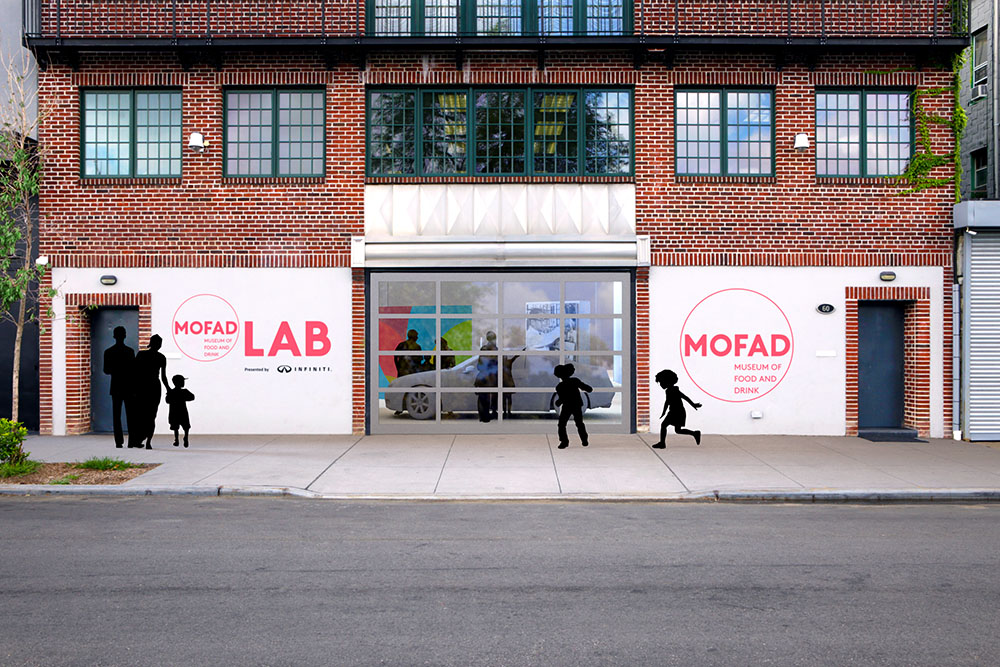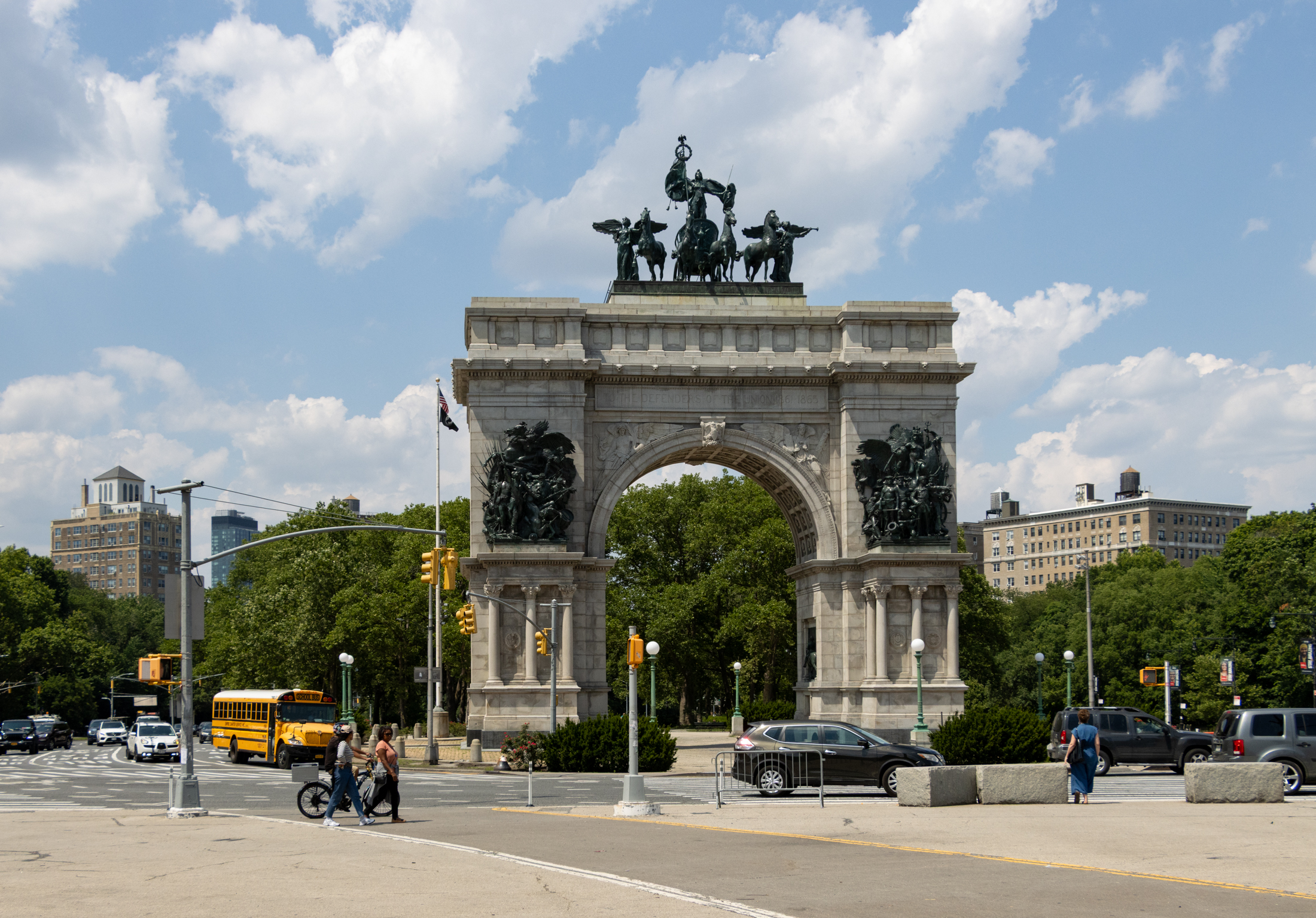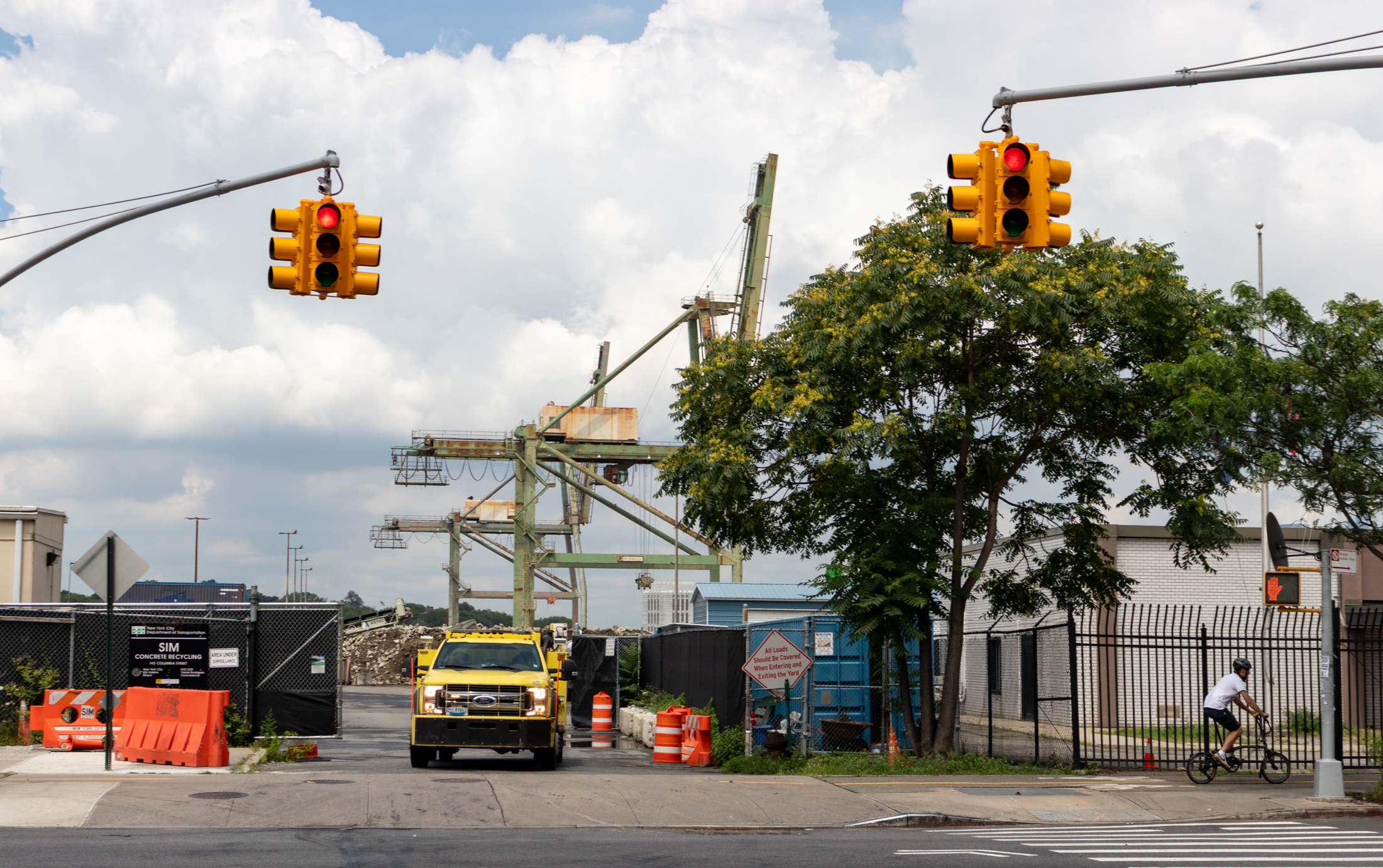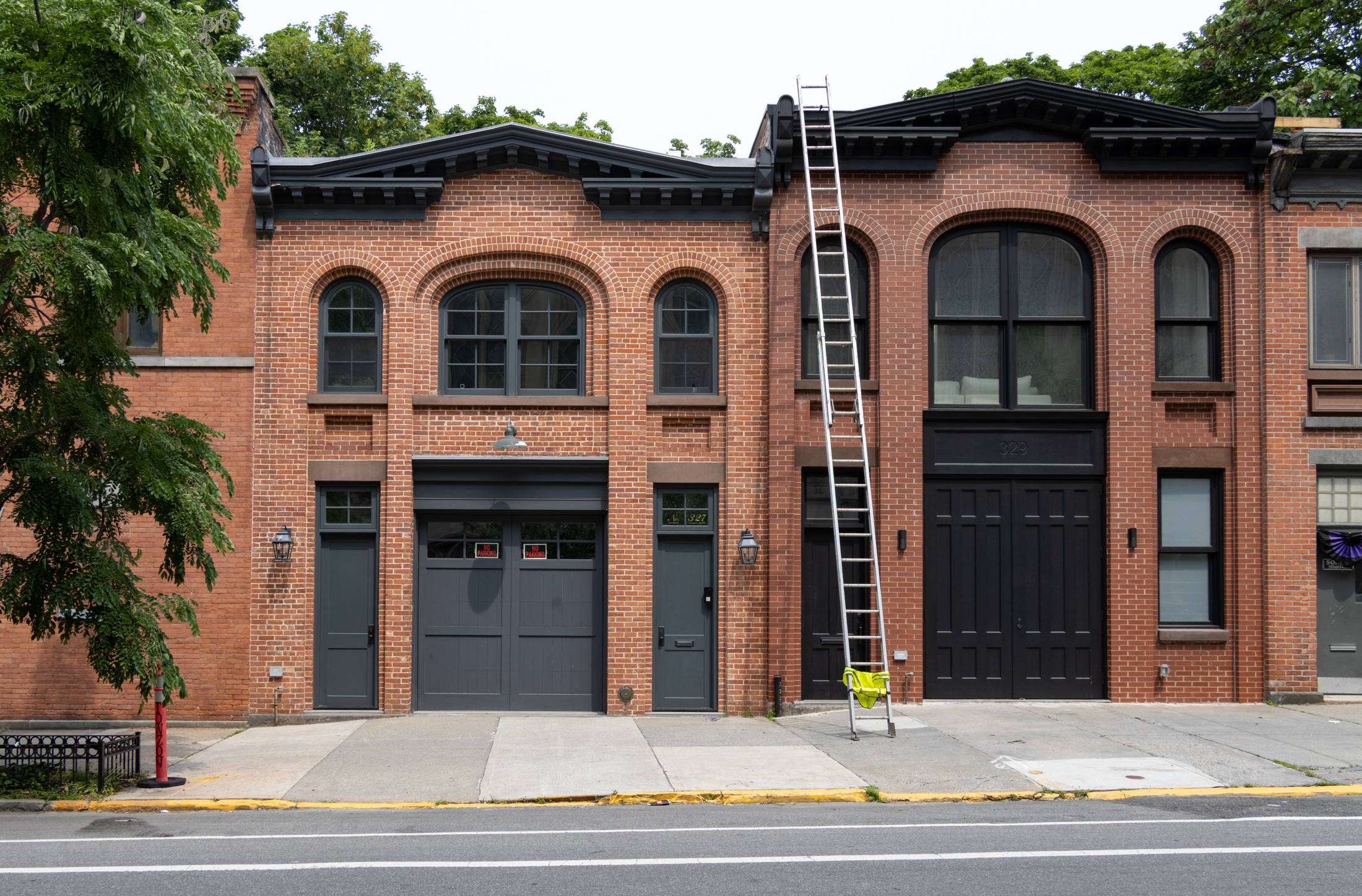Brooklyn's New Museum of Food and Drink Is Not Just for Foodies
Despite its location in one of Brooklyn’s fancy-food meccas, the Museum of Food and Drink, which opens in Williamsburg on October 28, has ambitions far beyond the local crowd that loves artisanal everything. In fact, Executive Director Peter Kim says it’s quite the contrary. “It’s really not about just celebrating food, ’cause you can do that…

Despite its location in one of Brooklyn’s fancy-food meccas, the Museum of Food and Drink, which opens in Williamsburg on October 28, has ambitions far beyond the local crowd that loves artisanal everything. In fact, Executive Director Peter Kim says it’s quite the contrary.
“It’s really not about just celebrating food, ’cause you can do that at a food festival or a restaurant,” Kim told Brownstoner. “We’re trying to take people into extremely important stories and provide rigorously researched objective information in a way that’s fun and accessible.”
Some of those stories are addressed in the museum’s first exhibit, Flavor: Making It and Faking It, an interactive exhibit that explores the $25 billion flavor industry. And down the line Kim hopes to address issues of food justice, digestion, and other aspects of eating and drinking that we may not think about constantly but affect us on a daily basis.
MOFAD’s new 5,000-square-foot space at 62 Bayard Street, called the MOFAD Lab, is its first permanent location, after a traveling exhibit in 2013 called “BOOM! The Puffing Gun and the Rise of Cereal.” The museum’s founders hope to eventually take on the even-more-daunting project of opening a full-scale museum, but for now they’ll be putting on one immersive exhibition at a time.
Brownstoner spoke with Kim, who in 2012 quit his job as a lawyer to focus full time on MOFAD, about what inspired his interest in food, his goals for MOFAD’s future and the biggest food issues facing Brooklyn today.
Brownstoner: What is your background with food? When did you start being interested in it beyond for the sake of feeding yourself?
Peter Kim: At a very young age I was fascinated by food, partly because my parents worked a lot and so by time I was 10 or 11 I was already cooking, and I was throwing dinner parties by the time I was in high school.
There were a few big moments [that impacted me]. One is reading On Food and Cooking by Harold McGee when I was in college. It takes a deeper dive into the things we eat, and looks at the history behind it and the science that’s going on in kitchen. That was revelatory for me because I suddenly realized that food was more than just pleasure but also culture and history and science and all these other things.
Two other things: I did the Congressional Hunger Coalition. For that I did food-stamp outreach, and part of the program was living at poverty level. Through my work there I really came face to face with the issue of food insecurity in the U.S. It only further underscored the importance of food, particularly for those who don’t have it.
And third, I spent three or four years abroad. I did Peace Corps in Cameroon, worked a little in Thailand, traveled through the Middle East and eastern Europe, and being abroad you see how much of a bridge food and booze can be. Where language fails, food is always there.
What are you most excited about with the current exhibit? What do you want people to take away from it?
I’m most excited about seeing people come and be inspired by it. We put a lot of thought into making this an exhibition that’s highly relevant to people’s daily lives and there are a lot of takeaways. There is this flavor industry that adjusts or enhances the flavors of almost everything we eat that’s produced on a mass scale. It’s something most people don’t necessarily realize or stop to reflect on.
It raises a lot of questions on a number of different levels. On the very deep end there are the philosophical questions about nature of real and fake, of authenticity. And on other levels there are questions that can be raised about how does our system of taste and smell work? Isn’t it interesting that we can provoke these sort of emotional responses by smelling something or tasting something?
I’m excited for us to show that we’re a museum for everybody. We’re not just a museum for foodies — quite to the contrary.
What themes do you want to explore in future exhibits?
What don’t we want to explore? You can honestly pick any food culture, any period of history and there’s likely a story there that we’d like to tell.
I would say agriculture is something we’re very keen to take on soon — issues of food justice, definitely. The main thing we want to do is find the really important stories and one aspect of MOFAD is a celebration of food, but it’s really not about just celebrating food, ’cause you can do that at a food festival or a restaurant. We’re trying to take people into extremely important stories and provide rigorously researched objective information in a way that’s fun and accessible.
One of my pet exhibitions that I’m excited about doing is one that explores the digestive system. I think this can be very fun but it’s extremely important. We have to know what’s going on between A and B and it’s kind of a mystery to us. We just put things into our mouth and then they turn into things like skin and hair and fuels our brain and makes us grow and sometimes makes us not feel well, or makes us happy. What is happening between turkey club sandwich and that?
How often will the exhibits change?
We’re not sure yet. This was our first go at it with the flavor exhibition, and I think after having gone through it we’ll be able to clearly understand what went into it, the budget for it, and how often we can do it. Certainly we want to put on another exhibition as soon as possible after this one but it’s tricky because our space can only put on one exhibition at a time.
What museums did you look to for inspiration in how to get this started?
Oh, so many! Just in NYC, some of the museums I admire the most are the Tenement Museum on the LES because they create immersive experiences in a way that few other museums can do. The Museum of the Moving Image [in Astoria] is a great example of a museum that has clearly thought through everything — everything just fits together in all the right ways in that museum.
The Museum of Mathematics, they’ve been mentoring us in a way. When we were getting started in 2012, when [program director] Emma [Boast] and I started working full-time on MOFAD, MoMath was on its way to opening its doors. We saw their whole process and they advised us and have been incredibly helpful.
And in terms of just pure grandeur and creating a universe to explore, the Metropolitan Museum of Art is one of my favorite museums in the world. When I know I have a full day I can spend at the Met I am in paradise. Every time I go it’s something different and new to discover.
What are the biggest food issues facing Brooklyn today?
What’s exciting is this there’s this whole new wave of interesting food in Brooklyn, but a lot of it seems to be at odds with some of the more longstanding food cultures in the neighborhoods. I don’t really have the right answer for it but we’re working on something that I can’t really talk too much about. We’ll be looking at food cultures in Brooklyn and elsewhere in the city, and I think you always want for neighborhoods to develop in a way that allows the people who have been there for a long time to feel it’s their home. And part is the food, of course. What would Greenpoint be without the amazing Polish food? I don’t have the right answer, but that’s something that is certainly a challenge.
In addition to the exhibits, what other kinds of events do you plan to host at the space?
We’re gonna have adult-oriented programs on Thursday evenings and family-friendly ones on Saturday mornings. We’ll be announcing our program lineup soon. There will be everything from food science demos by [MOFAD founder and president] Dave Arnold, where he’ll explain the science of the kitchen in sort of Mr. Wizard fashion, and we’ll have a pickle-making workshop where families can bring their kids and for just a few bucks come in and get a jar and make some pickles and take them home and watch them ferment.
Harold McGee is coming for questions and answers — he’s the guy who wrote book that very much inspired me. We’ll have chefs come in doing demos. We’re trying to expose people to the incredible world of things to explore around food.
I know the ultimate goal is to eventually expand to a full museum — are you hoping that would be in Brooklyn too?
Brooklyn would be a great place but it’s one of these things where it’s tricky to find a home for a museum like what we want to do. I’m definitely looking all over the place — there’s a lot of possible homes in Brooklyn but I think it’s really hard to say right now where we’ll end up.
[Rendering: MOFAD]
Related Stories
Here’s How Brooklyn Restaurants Fared in the 2016 Zagat Survey
Five Unique Brooklyn-Made Foods From the Cheers NY Festival
Michelin Adds Two Brooklyn Restaurants to Its List of Starred Eateries





What's Your Take? Leave a Comment